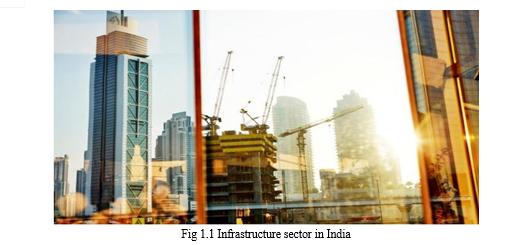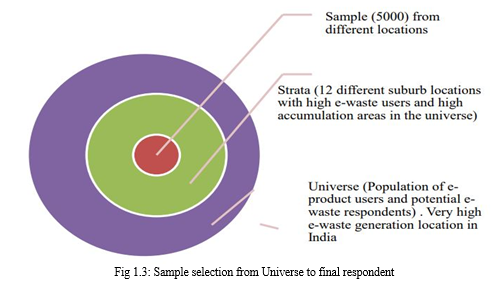Ijraset Journal For Research in Applied Science and Engineering Technology
- Home / Ijraset
- On This Page
- Abstract
- Introduction
- Conclusion
- References
- Copyright
A Review on the Indian Goods and Services Tax for Real Estate Markets
Authors: Miss Neha R Chaudhari, Prof. Pranav K. Lende
DOI Link: https://doi.org/10.22214/ijraset.2023.54520
Certificate: View Certificate
Abstract
The idea of taxation has been around for a long time in the world. The concept of taxes and their collection have undergone significant changes throughout history. The indirect taxation system of the country has been transformed completely with the introduction of Goods and Service Tax. It quickly turned into a contentious topic in every household or business. The GST brought along a series of significant changes. Every citizen was affected in some way by all these changes. Under the previous tax system, the purchaser had to pay VAT, service tax, stamp duty and registration costs when buying property under construction. Only stamp duty as well as registration charges were due on after-completion property, which were exempt from VAT and service tax. The GST will reduce the cost of purchasing a home as a result of the fact that developers had to pay entry Tax, CST, import duty, and excise duty on their business aspect under the previous Tax system, while buyers had to pay Service tax and VAT on residential units bought before completion, which are non-creditable Tax costs and are reflected in the unit price. Developers will be able to reduce their expenses and also pass savings on to customers as a result of the consistent tax rate as they will get input credits on GST paid for services and commodities purchased. The Value Added Tax (VAT) tax system has been simplified following the introduction of GST. Stamp duties were not included in GST by the government after its implementation. Schedule III of the GST Act of 2017 says that easily accessible properties aren\'t goods or services. It\'s more like purchasing or selling a piece of property than anything else. Individuals will not have to pay GST on the purchase of land or on the purchase of resold properties. Apart from the exemption pointed out earlier, real estate developers can also make use of the Input Tax Credit on building supplies under the GST system. Developers must meet a few prerequisites to be eligible for these advantages. The purpose of this paper is to examine the pre and post GST effects of the new tax system on real estate sector, and how all people of India are coping with it.
Introduction
I. INTRODUCTION
The real estate industry plays a crucial role in The Indian economy. By 2030, India is likely to have a real estate sector worth USUSD 1 trillion. It has a significant multiplier effect on the economy and thus plays a significant role in driving economic growth. It ranks as the second most employment - creating industry after agriculture. The real estate industry is growing at a rate of around 20 % each year and has been adding around 5-6 % to India's GDP, Not just because it creates substantial direct employment but also stimulates demand in more than 250 ancillary industries like cement, building materials, brick, paint, steel, consumer durables so forth.
The taxability of Construction work under indirect taxes has always been a challenging and litigious issue. The developer and also the buyer faced challenges in the pre- Goods and Services Tax ('GST') regime as a result of numerous previously unresolved Taxes, including VAT, Central Excise, Entry tax, Local Body taxes, Octroi, Service tax, etc.
The real estate sector faced challenges due to state specific rates, the idea of deemed sales, a different valuation for the purposes of Service and VAT tax, along with different payment schemes for tax, among other things.
The Central Government used to impose excise duty at a rate of 12.5 % on most items needed for construction activities before the implementation of GST. At the same time, State Previously, governments assessed value-added tax ("VAT") on identical items ranging from 12.5 % to14.5 %. The actual problem was the Excise and VAT taxes paid on the goods, construction products wasn't readily obtainable since input tax credit against service tax (4.5 % ) and State Specific VAT (1 % - 2 %) was levied on the under construction flat available to the customers.
The application of Indirect Taxes on Real Estate Sector has undergone a significant change after the introduction of GST on 1 July 2017. From 1 July 2017 until 31 March 2018.The developers were provided significant relief in 2019 by permitting Input tax credit and a single levy, namely GST at a rate of 12 % for Residential and commercial projects along with 8 % for affordable housing projects.

The seamless flow of input credit throughout the whole supply chain and across the nation for supply of Goods or Services is one of the major goals of introducing GST. Since April 1, 2019, Real Estate sector has been split from the Input Tax Credit ('ITC') builders and developers have the choice to either stay in 12 % GST slab with ITC (8 per cent for affordable housing) or opt for five per cent GST rate (one per cent for affordable housing) with no ITC for ongoing residential projects. Additionally, new residential projects could not reap the benefits of this option as they would have to adhere to the 5 % GST rate (one percent for affordable housing) without ITC.
A. Impact of GST on Real Estate Sector
Within the present note, we've centered on Impact of New Scheme of Taxation on the Real Estate Sector together with a few of the present concerns.
- On-Going Projects – Options Available With Developer And Not With The Buyer
As a layperson, every home buyer would be prepared to take advantage of lowered rate on purchase of flat without taking into account the rise in price of developer because of limitation of ITC.The buyer is not eligible to exercise the choice of paying tax at the old or new rates. Developers are required to pay tax on residential construction in case they choose to exercise the option.ITC: apartments at the current rate of 12 %. In the event the builder fails to exercise his right to pay tax at the old rate by a specific date, the developer will pay the developer an effective GST rate of 1 % or 5 % on all subsequent installments due on or after 01.04.2019, with no any ITC benefits, based on whether the apartment is an affordable or otherwise affordable residential apartment.

B. Input tax Credit
As pointed out previously, developer of ongoing residential project had a choice to either to proceed with the existing plan with ITC or even to choose the new scheme of taxation with no ITC.
Developer had to reverse some percentage of total ITC claimed for Project as per GST legislation by exercising the option to pay tax under new scheme. In the event of short balance, the ITC must be reversed from Electronic Credit Ledger and also from Electronic Cash Ledger. Developers who start up commercial projects after 1 April 2019 under real estate Project category can claim ITC under the brand new pattern of taxation for Real Estate sector. In addition, in mixed projects where Commercial carpet area exceeds 15 % of total carpet area, the builder can only claim ITC for commercial premises. However, such projects also include facilities such as Elevators, Corridors, etc. that will be used frequently by both Residential and Commercial premises. There is no clarity on the claim of ITC for these common amenities. A clarification from the Government can help prevent future litigations.
C. Mixed Project – Limitation of 15%
Limitation of 15 % In case of mixed project, in which carpet area of business premises is under 15 % of total carpet area, developer is able to charge GST at five % with no any ITC even for business premises. If the carpet area of commercial buildings exceeds 15 % of total carpet area, the developer has to pay GST at 12 % with ITC. The taxation scheme for commercial premises in a mixed project is based on the proportion of commercial premises carpet area to total project carpet area. As a result of any unanticipated circumstances, ultimately, in case that ratio change and also lead to carpet area of business buildings being over 15 % of total carpet area, the whole calculation of price plus the profitability goes haywire. Furthermore, use of ITC will additionally be restricted because of time limit to receive ITC by return for the month of September of the following F.Y.
D. Deemed valuation of land
The reduction of 1 % with no input credit on building of the affordable homes and 5 % on construction of besides affordable homes will be the effective rate after taking account of 33 % deemed deduction for the worth of the land this a third regarded as deduction due to transfer of Land or Undivided Share of land is regardless of the actual worth of the land transferred. The deemed deduction is not available if there is absolutely no transfer of land or undivided share of land. The reason for this is that in metro areas, the value of the land can sometimes exceed the value of the construction. Only 1 / 3 of deductions are deemed unjustifiable in such a situation.
E. Scope of the study
- A study on the marketing practices of the Construction & Real Estate business in India.
- Customer satisfaction with regard to the Real Estate and construction business in India.
F. Limitations of the study
The present study like any other research studies cannot to be perfect one in all aspects. Although, possible effort was made to conduct the study as rigorously as possible, the study is not free from the following limitations:
- Several sources have provided the data necessary for the study; the secondary data may therefore have some overlap or duplication. There may be some discrepancy in the secondary data as well.
- The data accuracy is dependent on the data available through the secondary source.
- The implementation of GST is a novel tax system, resulting in some challenges for the population.
- The verification of the correctness of the information supplied is extremely difficult.
- Since all of the services and products aren't commonly used by all of the consumers, it's hard to come up with realistic conclusions based on the survey.
II. LITERATURE SURVEY
Agrawal, t. j, & Goyal, in his study on “Impact of GST on real estate and automobiles sector” describe about reformation of Indian economy after implementation of new GST law.
Downs, D. H., Sebastian, S., Weistroffer, C, & Woltering, R. O. (2016) in his study on , “Real estate fund flows and the flow-performance relationship” open up various relation with the real estate. Study published in foreign country. Paper emphasized relation of fund flow with other sectors. However, study does not relate to tax.
Kumar, C. R. (2015) authored a paper titled "GST in Indian Economy: A Case Study." "Basic idea of GST and Its Impact" explains its Benefits and impact. The decrease in tax rate and compliance burden is a major benefit of GST for both business person and consumer..
Dani, S. (2016) presented his paper entitled, "A research paper on the effect of goods and service tax (GST) on Indian economy." What is GST in Indian economy? The paper is restricted to a descriptive study. Data taken from publicly available sources
Kumar, V. (2016) in his paper on, “GST-A boon or a bane for India” explain about recommended GST model and its benefit. Study published prior to GST era which explore about concept of GST in Indian economy. Paper made analysis between pre GST model i.e. VAT and new GST model.
Paramashivaiah, P., and Suresh, B. K in their report on, "GST in India: The Study "A study on Benefits and Challenges" examines the impact of GST on a number of industries such as real estate, electric and services sectors, and compares it with the prior GST regime.
Vij, D. (2018) carried out a study titled "A study on GST (Goods and Service Tax): GST will face a future challenge, as described in "The Way Forward." New GST law has many loopholes which need to be plugged up. The study compared the effects of GST across various sectors.
Tripathi, S. (2018) analyzes the impact Of Goods and Service Tax (GST) on Indian GDP in his report titled "An Analysis of Goods and Service Tax (GST) On India's GDP." The implementation of GST has had a positive effect on Indian GDP.
Vasanthagopal, R. (2011), "GST in India: A review of the literature." Changes in economy under new GST regime are characterized by "a significant improvement in the indirect taxation system." The study indicates that the GST law has a positive effect on various sectors.
III. RESEARCH METHODOLOGY
A. Methodology
Research is a systematic and logical search for new and helpful information on a specific topic. A systematic approach to solving a problem is known as research methodology. It's a science that studies how research should be conducted. The ways in which researchers describe, explain and predict phenomena are referred to as research methodology.

B. Research Design
The characteristics of a good research design consist of the definition of the problem, estimation of the time required for the research project, and estimation of expenses. the purpose of research design would be collecting the necessary data and to do so correctly and economically. A research design is simply and purely the framework for a research which guide the collection along with analysis data. The two fundamental kinds of research design were triggered in this project.
The Research design stipulates the details - the nuts & bolts-of implementation. The research design of this study involved the following components
- Creating the exploratory and descriptive par
- Specifying the sampling procedure and sample size.
- Establishing the information required Measurement scales & scaling methods.
- Construction and Pilot tests of questionnaire.
- Collecting data and performing data analysis.
IV. FUTURE-SCOPE
- To explore the concept of GST in real estate sectors.
- To look into the pre and post impact of GST in real estate.
- To find out short coming of GST in real estate.
- To find out the how the general public is responding towards this change.
Conclusion
The Real Estate Sector will be greatly affected by the Implementation of GST, as per the conclusion. While the cascading effect has been eliminated under GST when compared with the pre-GST regime, the New Scheme of Taxation restricts the claim of ITC in residential projects, which has undermined the primary objective of GST, which is to allow unrestricted credit flow. The companies involved in ongoing residential projects are now being asked to review their cost sheets and assess the advantages of Old Scheme vs. New Scheme due to the New Scheme of Taxation. The decrease in tax rate is a welcome development on the surface, but it has come at a cost in the form of ITC. While consumers are hoping for lower prices, the actual decrease may be minimal or even cause higher costs due to restrictions on claiming ITC. The industry must strike a balance between consumer demands for lower prices and developer demands for project profitability.
References
[1] T. Agrawal. J., and Goyal, C. A.(2018).Impact of GST on real estate and cars industry. [2] Downs, D. H., Sebastian, S., Weistroffer, C. and Woltering, R. O. (2017). Real estate investment flows as well as the flow - performance relation. The Journal of Real Estate Finance and Economics 52 (4), 337 - 882. [3] Kumar C. R. (2015). Indian Economy and GST: It is Benefits and Impact. The International Journal of Science and Research 7, 759 - 761. [4] Dani, S. (2015). Research paper on the effects of goods and services tax (GST) on Indian economy The Business and Economics Journal, 7 (4), 1- 3 [5] V. Kumar. (2016). is GST-A a boon or a curse for India? International journal for cutting edge research in multidisciplinary area, 2 (9), 315-319 [6] Paramashivaiah, P. and Suresh, B. K. GST in India: Benefits and Challenges: A Study. The Impact of GST on Indian Economy, 77 [7] Vij, D. (2017). A research paper on GST (Goods and Service Tax): The Way Forward. The International Journal of Academic Research and Development (IJAR & D), 4 (7), 13-18 [8] Tripathi, S.(2018). The impact of goods and services tax (GST) on the GDP of India [9] Vasanthagopal R. (2011). What is GST in India, The indirect taxation system has undergone a significant advancement. The International Journal of Trade, Economics & Finance, 2 (2), 144
Copyright
Copyright © 2023 Miss Neha R Chaudhari, Prof. Pranav K. Lende. This is an open access article distributed under the Creative Commons Attribution License, which permits unrestricted use, distribution, and reproduction in any medium, provided the original work is properly cited.

Download Paper
Paper Id : IJRASET54520
Publish Date : 2023-06-29
ISSN : 2321-9653
Publisher Name : IJRASET
DOI Link : Click Here
 Submit Paper Online
Submit Paper Online

